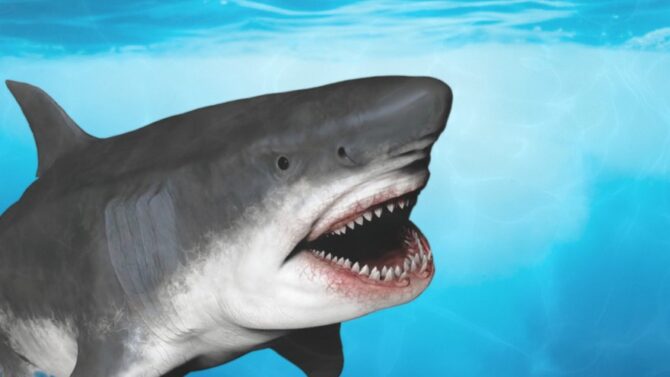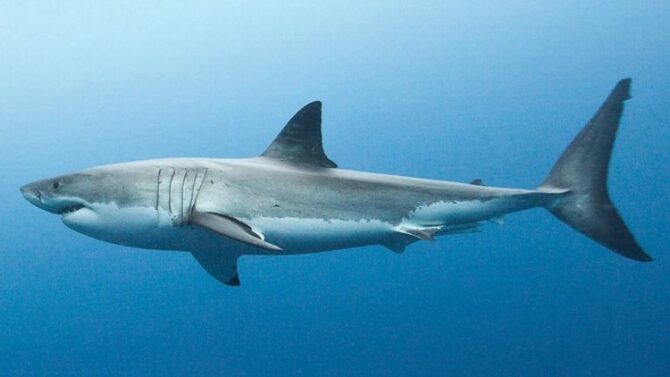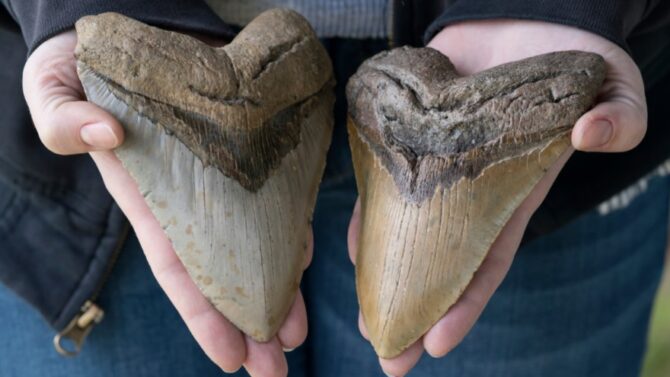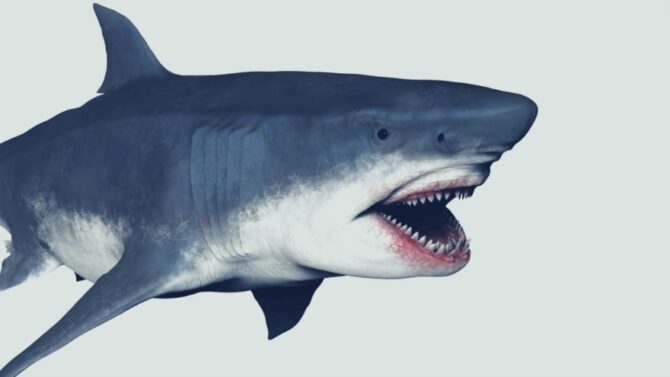Megalodons are great sharks that existed in our oceans once upon a time.
They were apex predators at the time and were among the animals at the top of the food chain.
The last megalodon seen in our waters was just about 3.6 million years ago.
Where is the great predator now? Do megalodons still exist? Is there a chance it still lives on our planet?
We’ll look into the mind-blowing features of this creature as well as the real truth about megalodon sightings today.
How Large was a Megalodon?
The oldest megalodon fossils, known as (Otodus megalodon before being changed to Carcharocles megalodon) are estimated to be about 20 million years.
This massive shark will proceed to rule in Earth’s waters for 13 million years before going extinct just 3.6 million years ago.
The Otodus megalodon is the biggest shark to ever exist to date and is classified among the biggest fish to over roam the oceans.
It became well-known when it figured in the movie entitled The Meg.1
The megalodon in the movie was a bit exaggerated as this shark was not that big.
It grew between 15 to 18 meters, unlike the movie’s depiction of it being over 23 meters long.
Among today’s current marine animals, the biggest whale sharks can be compared to the megalodon, with a size of 18.8 meters.
A megalodon’s size can be estimated based on its teeth. Its teeth could be over 16 centimeters long.
Megalodon simply means big tooth. These teeth could help us learn more about their dietary habits.
Recent discoveries showed that the megalodon’s size was affected by its environment, with those in colder waters reaching larger sizes to maintain their body heat.
What was the Megalodon’s Diet Composed of?
The Megalodon was a carnivorous animal; with its sharp, jagged teeth, that much is evident. It probably ate lesser sharks and marine mammals ( humpback whales, dolphins, and other fishes).
An animal as big as the megalodon had a huge appetite, hence the choice of larger prey.
Fossil proof has been discovered that establishes that the megalodon indeed ate sizeable marine creatures.
This includes fossilized whale bones that include cut marks of megalodon teeth on them reflected on their surface and tips of teeth that had broken during a feeding over millions of years ago.
How Wide was the Megalodon’s Jaw?
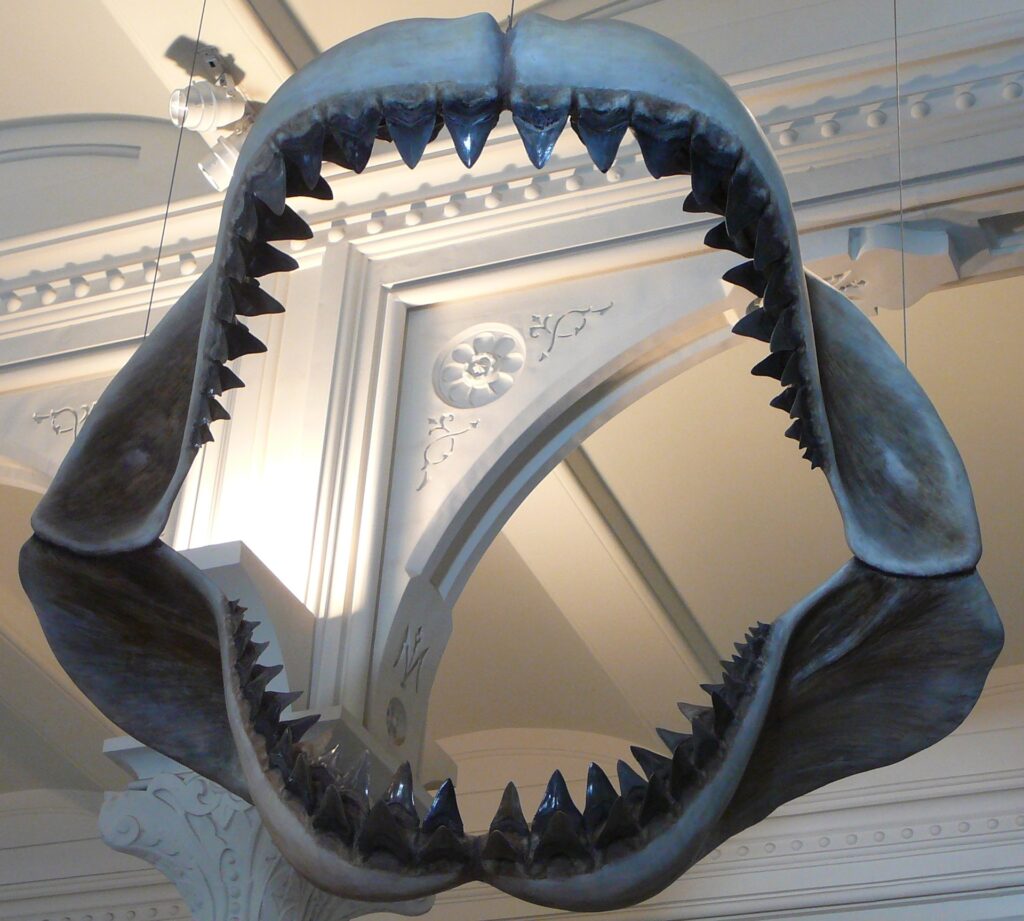
To capture prey as large as a whale, the megalodon had to be capable of opening its mouth very wide.
The current estimate is that its jaw size ranged between 2.7 between 3.4 meters, easily big enough to swallow two grown individuals sitting side by side whole.
These jaws were lined with 5 rows of teeth, the total number of teeth being about 276 teeth. Mind you; these sharks shed a lot of teeth in a lifetime.
Experts trying to reconstruct the shark’s bite force believe that these animals’ bite force was massive, making it one of the most ferocious predators to ever have existed.
The great white shark that is the same size as the megalodon has a bite force of about 18216 N (Newton), while the megalodon’s bite force itself is estimated between 108514 N to 182201 N depending on its size.
The Physical Appearance of the Megalodon
When the megalodon was first reconstructed, it was portrayed as a bigger version of the great white shark ( Carcharodon carcharias).
This has proven to be incorrect. It was descended from a different bloodline of shark that died out with it.
The megalodon also had a shorter nose compared to that of the great white has a flatter nose. It had longer pectoral fins to support its massive physical proportions.
The oldest known ancestor of the megalodon is a 55 million years old shark called Otodus obliquus which was just 10 meters long.2
However, it is believed that the megalodon is a descendant of the Cretalamna appendiculata.
This shark dates back to 105 million years ago, meaning that the megalodon line existed on Earth for over 100 million years.
With more fossils being discovered, scientists have ascertained that the ancestor of the great white shark and that of the megalodon were somewhat competitors.
They existed in the same ecosystem.
What Ecosystem did the Megalodon Live In?
The megalodon lived in warm areas (the tropics) around the globe.
They spread so wide that their teeth have been found everywhere except Antarctica.
This probably has to do with the fact that Antarctica is an extremely cold zone.
Their teeth are frequently found off the east coast of America, close to the coast, and at the bottom of saltwater creeks and rivers of the Carolinas, Florida, and Georgia.
The ease with which the megalodon’s teeth are found is due to the clarity of seawater.
Collectors often go diving there in hopes of getting a new tooth of great value.
The megalodon teeth can also be found in the UK. However, it is seldom of good quality.
What made the Megalodon go Extinct?
The Megalodon was already extinct at the end of the Pliocene ( 2.6 million years ago) when the Earth went through a phase of global cooling.
No exact date can be given for when the last megalodon died.
What we do know for certain is that they started dying out about 3.6 million years ago.
Studies made revealed that 30% of large marine animals died out, including 43% of turtles and 35% of sea birds.
These animals went into extinction because the general atmosphere of the planet cooled, causing bottom feeders to die.
This affected the predators at the top of the food chain; there was no prey to be caught.
There is also a chance that smaller animals adapted to the cooler temperature and migrated to somewhere their predators couldn’t reach.
Lack of food wasn’t the only thing that could have killed megalodons; the cooling of the planet affected the tropical waters, making them ice cold.
Mind you, megalodons exist in warm climates and cannot survive extreme cold. They lost their habitat.
Megalodons are also believed to have given birth close to the shore.
They did this because these shallow tropical waters were perfect nurseries for their pups, protecting them from the dangers lurking in open waters, such as the larger toothed whales.
The cold temperatures made ice appear on the surface of the water; the sea level also reduced drastically.
Pupping grounds were destroyed, and a whole new generation of megalodons was wiped out.
A recent analysis brought up another factor that may have caused the extinction of the megalodon.
They were constantly competing with great white sharks for food because they had the same eating habits.
Do Megalodons Still Exist Today?
The Megalodon is not alive, not even in deep oceans. The Discovery Channel went wrong with this fact.
If it were still alive, in any ocean at all, we would all know.
Aside from its large physical appearance, which cannot be camouflaged in open waters, the ocean floor would have been littered with tens of thousands of teeth.
Bite marks would also have been noted on other big marine animals.
Although deep waters would have been the best place for this shark to attempt to go unnoticed, they can only survive in warm waters. Megalodons are vulnerable to cold.
Conclusion
The Megalodon is a huge shark that went extinct millions of years ago. It has never been seen since then.
Scientists have made a lot of research to find out what made them disappear.
The common opinion is that the abrupt temperature change that plunged the world into a cold era was what killed them.
